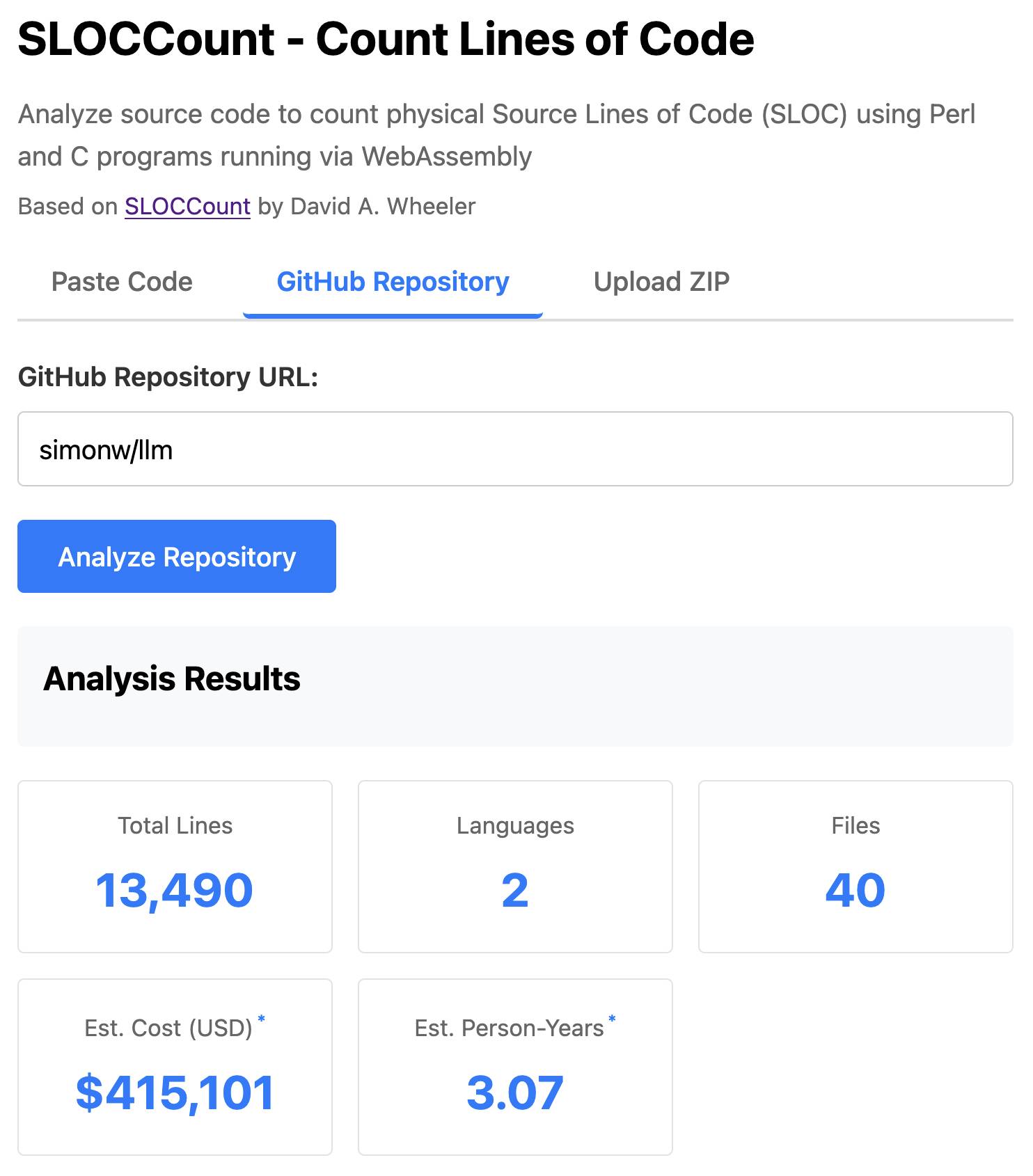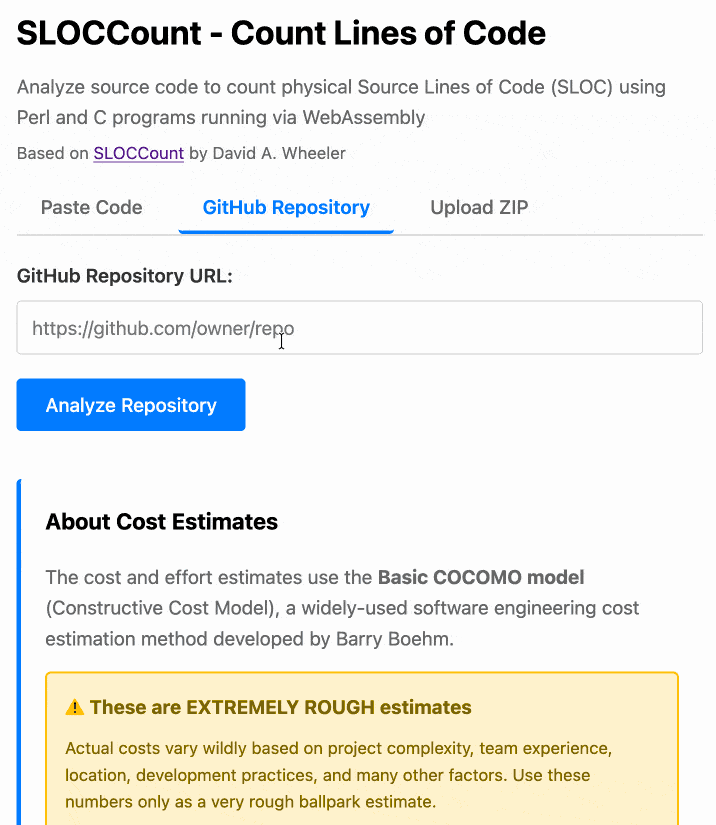Wednesday, 22nd October 2025
Claude Code stores full logs of your sessions as newline-delimited JSON in ~/.claude/projects/encoded-directory/*.jsonl on your machine. I currently have 379MB of these!
Here's an example jsonl file which I extracted from my Deepseek-OCR on NVIDIA Spark project. I have a little vibe-coded tool for converting those into Markdown which produces results like this.
Unfortunately Claude Code has a nasty default behavior of deleting these after 30 days! You can't disable this entirely, but you can at least delay it for 274 years by adding this to your ~/.claude/settings.json file:
{
"cleanupPeriodDays": 99999
}
Claude Code's settings are documented here.
SLOCCount in WebAssembly. This project/side-quest got a little bit out of hand.

I remembered an old tool called SLOCCount which could count lines of code and produce an estimate for how much they would cost to develop. I thought it would be fun to play around with it again, especially given how cheap it is to generate code using LLMs these days.
Here's the homepage for SLOCCount by David A. Wheeler. It dates back to 2001!
I figured it might be fun to try and get it running on the web. Surely someone had compiled Perl to WebAssembly...?
WebPerl by Hauke Dämpfling is exactly that, even adding a neat <script type="text/perl"> tag.
I told Claude Code for web on my iPhone to figure it out and build something, giving it some hints from my initial research:
Build sloccount.html - a mobile friendly UI for running the Perl sloccount tool against pasted code or against a GitHub repository that is provided in a form field
It works using the webperl webassembly build of Perl, plus it loads Perl code from this exact commit of this GitHub repository https://github.com/licquia/sloccount/tree/7220ff627334a8f646617fe0fa542d401fb5287e - I guess via the GitHub API, maybe using the https://github.com/licquia/sloccount/archive/7220ff627334a8f646617fe0fa542d401fb5287e.zip URL if that works via CORS
Test it with playwright Python - don’t edit any file other than sloccount.html and a tests/test_sloccount.py file
Since I was working on my phone I didn't review the results at all. It seemed to work so I deployed it to static hosting... and then when I went to look at it properly later on found that Claude had given up, cheated and reimplemented it in JavaScript instead!
So I switched to Claude Code on my laptop where I have more control and coached Claude through implementing the project for real. This took way longer than the project deserved - probably a solid hour of my active time, spread out across the morning.
I've shared some of the transcripts - one, two, and three - as terminal sessions rendered to HTML using my rtf-to-html tool.
At one point I realized that the original SLOCCount project wasn't even entirely Perl as I had assumed, it included several C utilities! So I had Claude Code figure out how to compile those to WebAssembly (it used Emscripten) and incorporate those into the project (with notes on what it did.)
The end result (source code here) is actually pretty cool. It's a web UI with three tabs - one for pasting in code, a second for loading code from a GitHub repository and a third that lets you open a Zip file full of code that you want to analyze. Here's an animated demo:

The cost estimates it produces are of very little value. By default it uses the original method from 2001. You can also twiddle the factors - bumping up the expected US software engineer's annual salary from its 2000 estimate of $56,286 is a good start!
I had ChatGPT take a guess at what those figures should be for today and included those in the tool, with a very prominent warning not to trust them in the slightest.
Living dangerously with Claude
I gave a talk last night at Claude Code Anonymous in San Francisco, the unofficial meetup for coding agent enthusiasts. I decided to talk about a dichotomy I’ve been struggling with recently. On the one hand I’m getting enormous value from running coding agents with as few restrictions as possible. On the other hand I’m deeply concerned by the risks that accompany that freedom.
[... 2,208 words]Dane Stuckey (OpenAI CISO) on prompt injection risks for ChatGPT Atlas
My biggest complaint about the launch of the ChatGPT Atlas browser the other day was the lack of details on how OpenAI are addressing prompt injection attacks. The launch post mostly punted that question to the System Card for their “ChatGPT agent” browser automation feature from July. Since this was my single biggest question about Atlas I was disappointed not to see it addressed more directly.
[... 1,199 words]